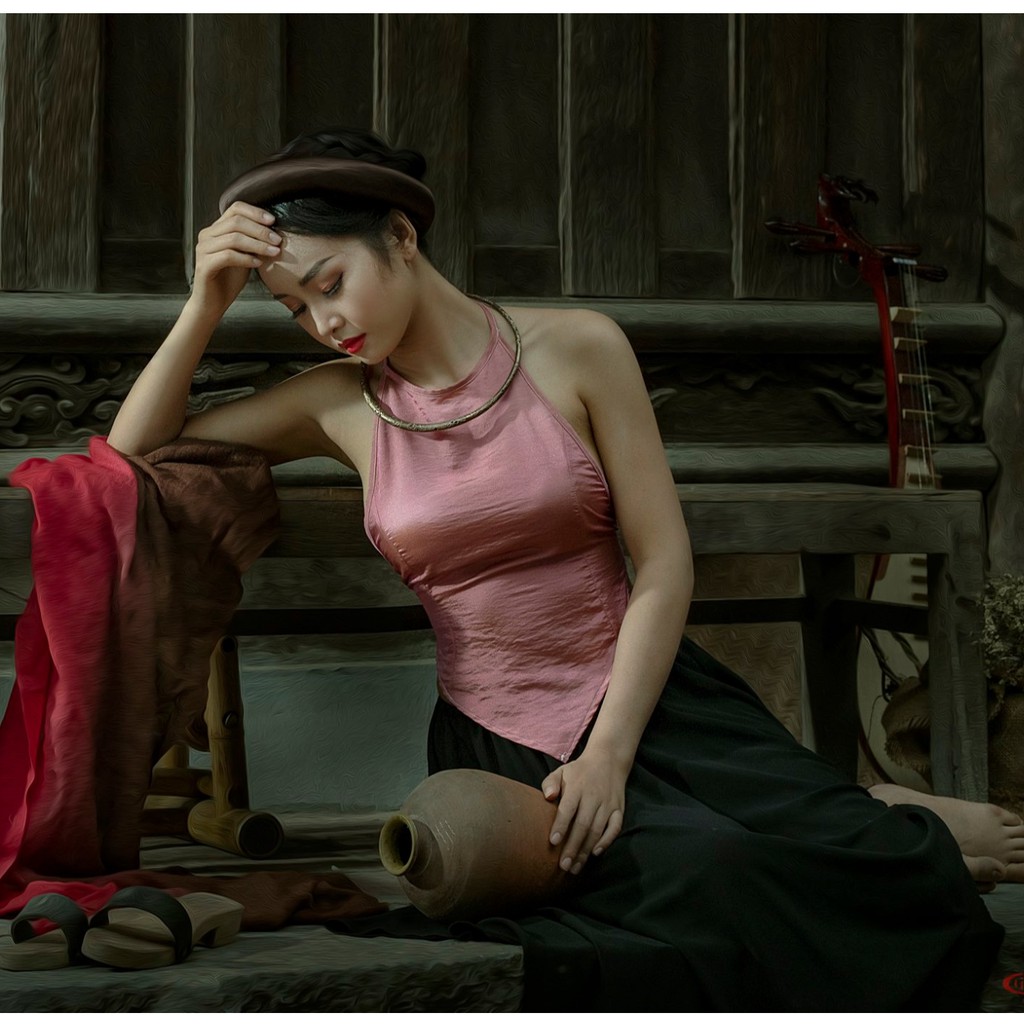Looking back at the historical development of national dress, Vietnam has not only Ao Dai but also Yem – the traditional camisole.
The image of a graceful girl in the national glamorous long dress has been a symbol of Vietnam. But looking back at the historical development of national dress, Vietnam has not only Ao Dai but also Yem - the traditional camisole.
1. The Vietnamese traditional Camisole
1.1 The history of Vietnam traditional Camisole
In the old days, the Vietnamese camisole was called Yem. It is an ancient type of clothes, which is still maintained until today. Yem has been used at all levels of society from the working class to the upper classes. It was also used in traditional festivals, so it was the traditional dress of the old ladies.
Yem appeared since the very first day of Vietnamese life, but until the Ly Dynasty, it was basically designed in shape. Through the tide of history, Yem changed incessantly and improved its design. However, the revolutions of Yem did not take place until the beginning of the last century, while Western dress and bra appeared in Vietnam. In the 17th century, Yem had no major change in design. In the 19th century, Yem has a square shape, crossing the chest of the woman with the upper corner cut to fit under the woman’s neck and attached two cord to tie behind the nape
1.2 The development process of the Vietnam traditional Camisole
Yem is a thin thread attached across the chest and abdomen. There were three common models of Yem: Yem co xay, Yem co xe, Yem co nhan (The round neck is called Yem Co Xay, the V neck is called Yem Co Xe, the deeper V neck is called Yem Co Nhan).
In the 20th century, Yem was widely used with a variety of designs and models. Yem used for working has a brown color and woven with coarse cloth. Urban women preferred white, pink, or red, while rural women wore Yem in brown or beige colors that matched their rustic surroundings. Nevertheless, on special occasions, such as New Year or festivals, women from rural areas also wore colorful yem.
A traditional Vietnamese camisole that was usually worn by ladies was called “Yem Deo Bua”. The name was “yem deo bua” because it has a small bag of musk on the side and it was an advantage weapon of the ladies. Besides, yem has made many original love stories. Earlier, when a girl had a date with her darling, she usually put a piece of betel in her camisole. It was called “khau trau dai yem” and maybe there is no betel more supernatural than this kind of betel.

2. Yem - an artistic dress
2.1.The beauty of young women
Today, Yem - the traditional camisole is valued for its cultural and artistic values. And on festive occasions, women throughout Vietnam wear Yem and other traditional clothing to get enthusiasm.
Women in the 17th and 18th centuries wear Yem as underwear. It is interesting that they still wear yem when going outside, shopping, or visiting the field, with a non-button jacket. This is due to the special features of this “shirt”. Indeed, the shape and size of Yem can highlight the beautiful body contours of women: the curve of the waist, sexy sheer backs, and the white neck is nicely decorated with the wide-knit cord. However, yem still covers the sensitive body parts of women. Therefore, women did not see any problems with attraction from others.
Someone said that traditional women’s clothing is so sexy. Ao Dai is discreet, but the tight lines of these shirts make people more and more curious. And Yem makes people that they thought they had seen everything but actually nothing.
2.2 Cultural values
Because of the special beauty of Yem - the Vietnamese traditional camisole, a lot of artists have brought it into poetry, music, to become a muse, and the endless inspiration of ancient poets, the proverbial Vietnamese proverb.
In the summer, lotus flowers bloom brilliantly and it is easy to see the girls wear ao dai to take photographs in the lotus garden with the fresh lotus flowers as a sign of youthfulness. If you visit Vietnam during summer vacation, don’t’ forget to visit the lotus ponds in West Lake in Hanoi to breathe fresh air and see amazing Vietnamese girls wear Yem to take photos.
